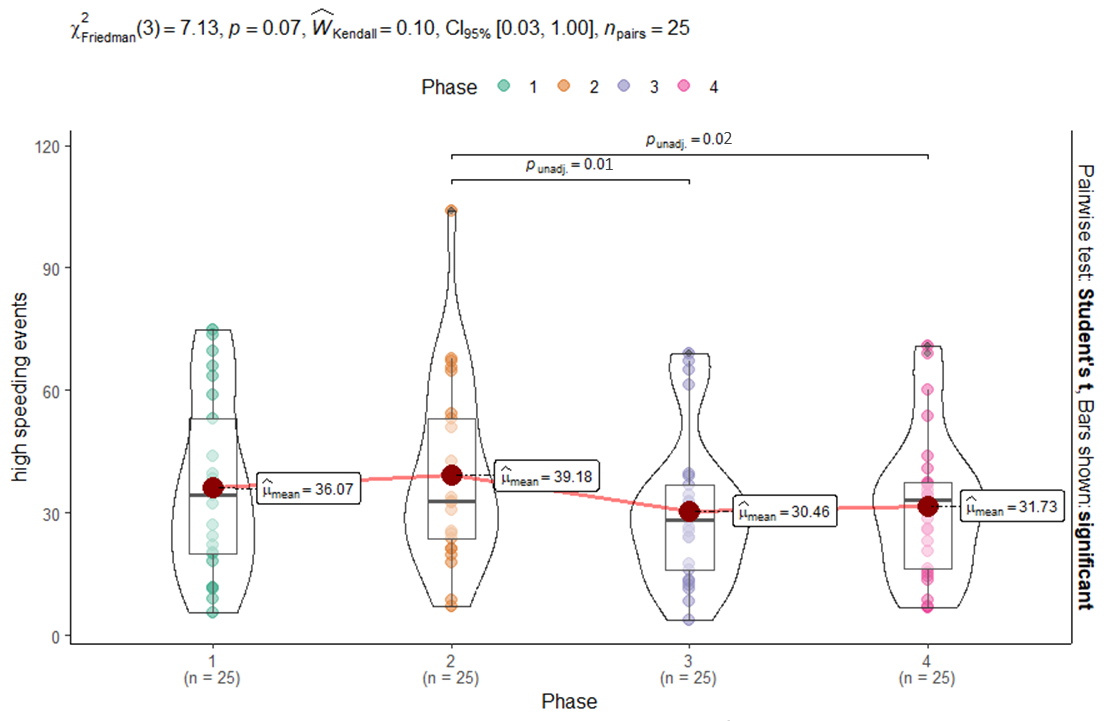
This paper aims to evaluate the H2020 project i-DREAMS safety interventions impact on risky driving with a specific focus on speeding events. In this framework, a negative binomial model is developed to examine the correlations between ‘high’severity speeding events per 100 km where the driver exceeds the proposed speed limit, the safety intervention schemes, and other risky driving factors. Additionally, a Friedman test is conducted to further explore the differences in risky driving behavior among the different intervention schemes. The findings highlight the positive impact of combining real-time and post-trip interventions, in reducing ‘high’ speeding events. Moreover, it is revealed that the presence of harsh acceleration, deceleration, and steering, and fatigue events amplifies the frequency of speeding. Overall, these findings emphasize the efficacy of specific intervention schemes and highlight the importance of addressing multiple risk factors simultaneously to enhance driver behavior and ensure road safety.
| ID | pc507 |
| Presentation | |
| Full Text | |
| Tags |








